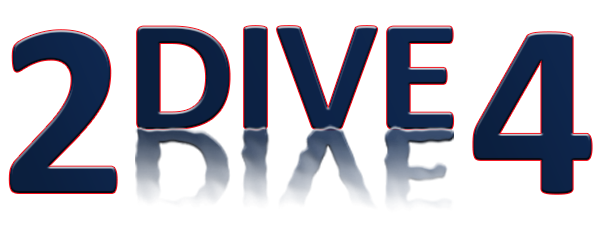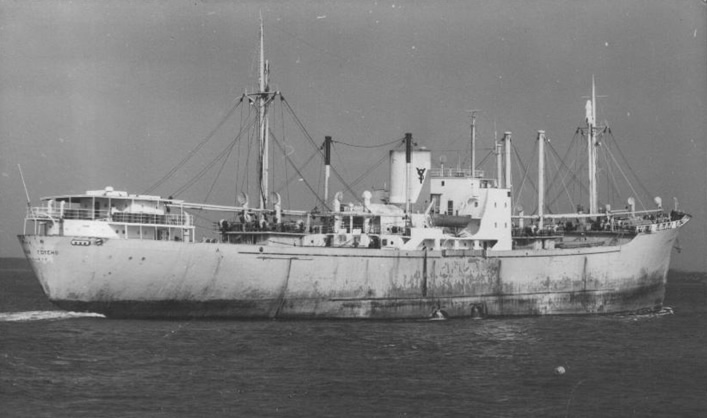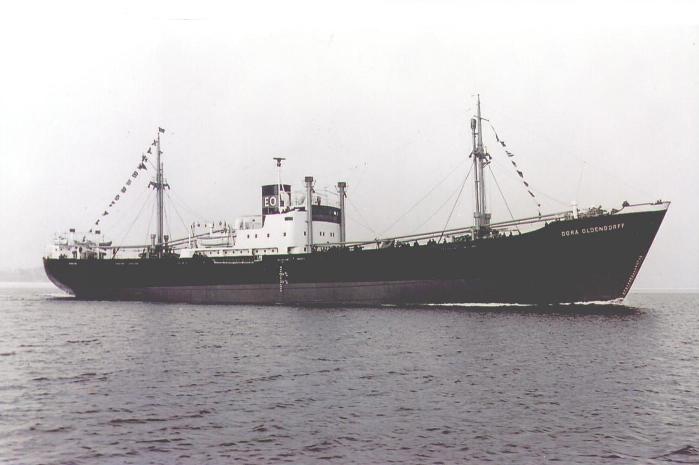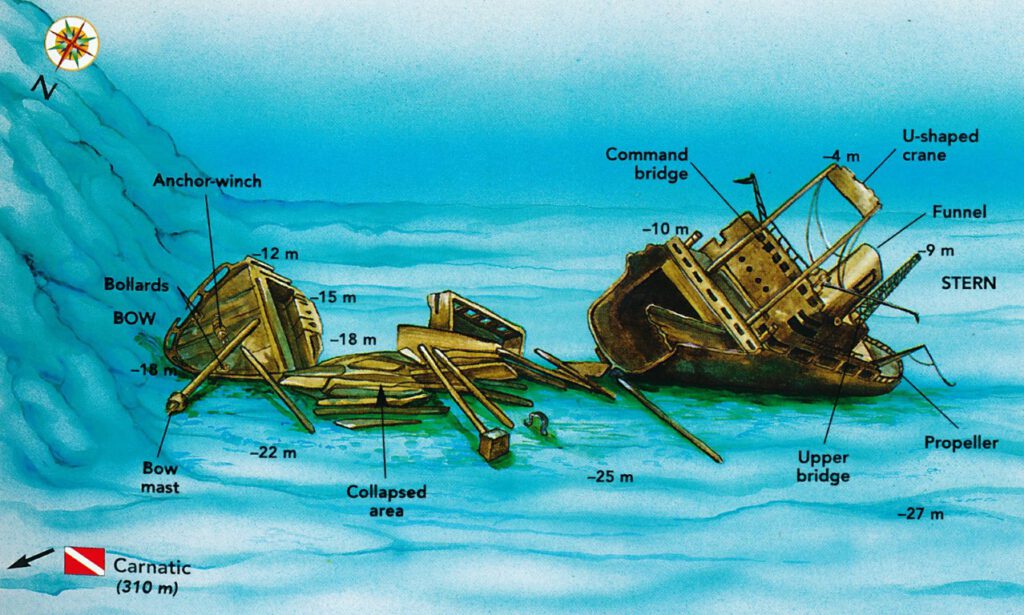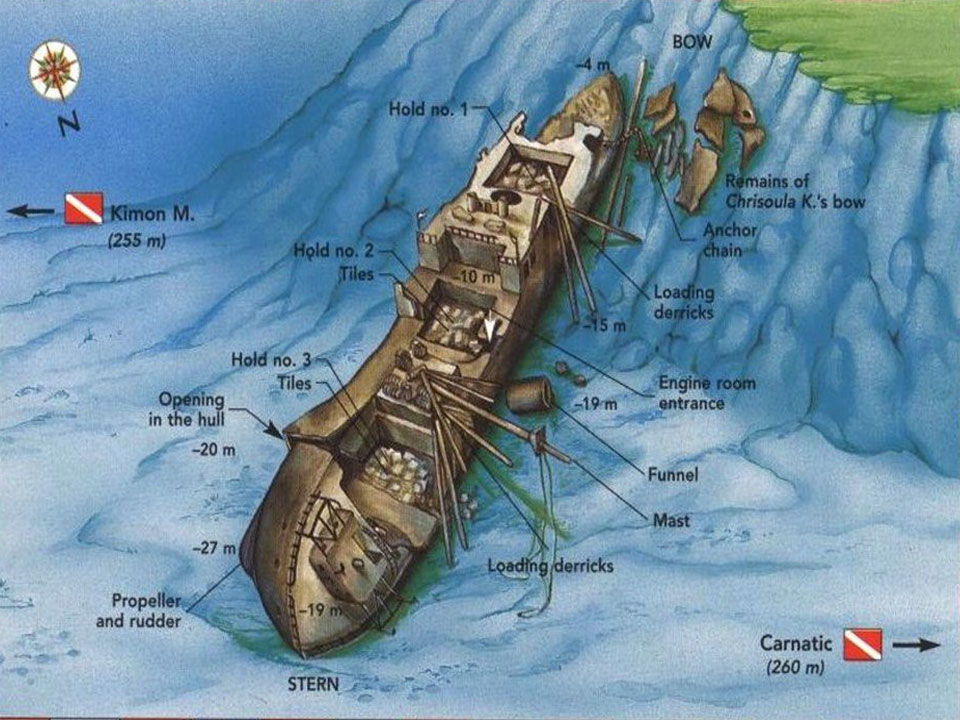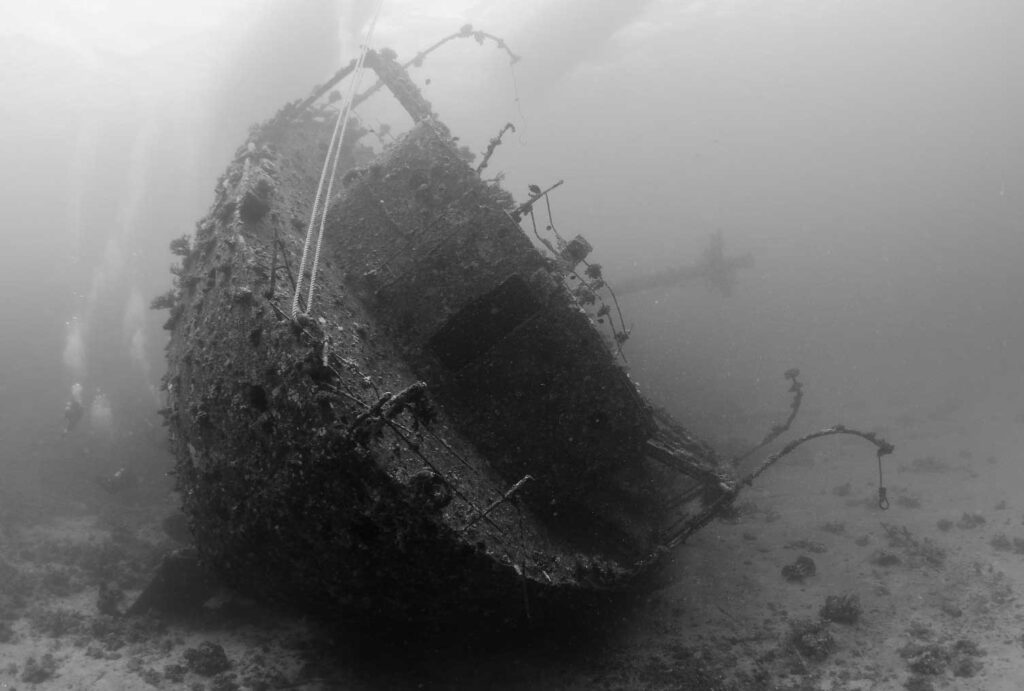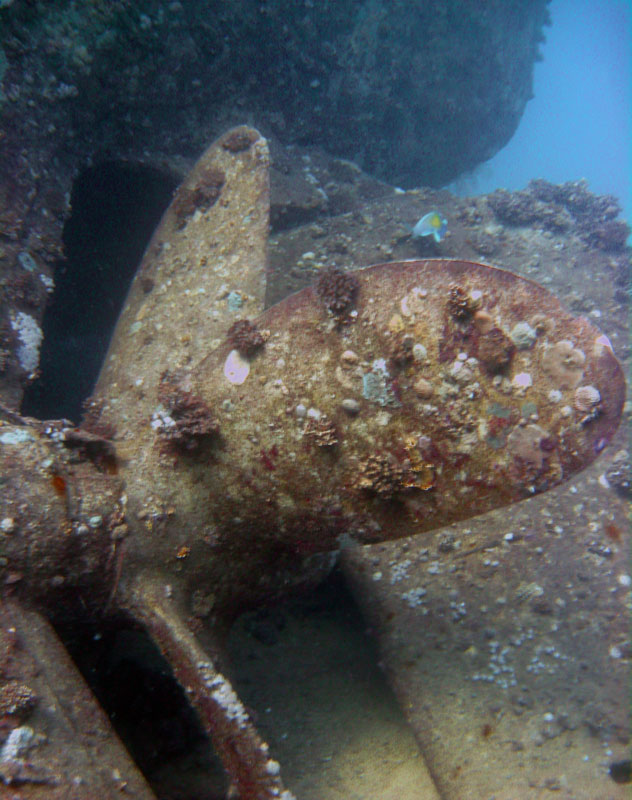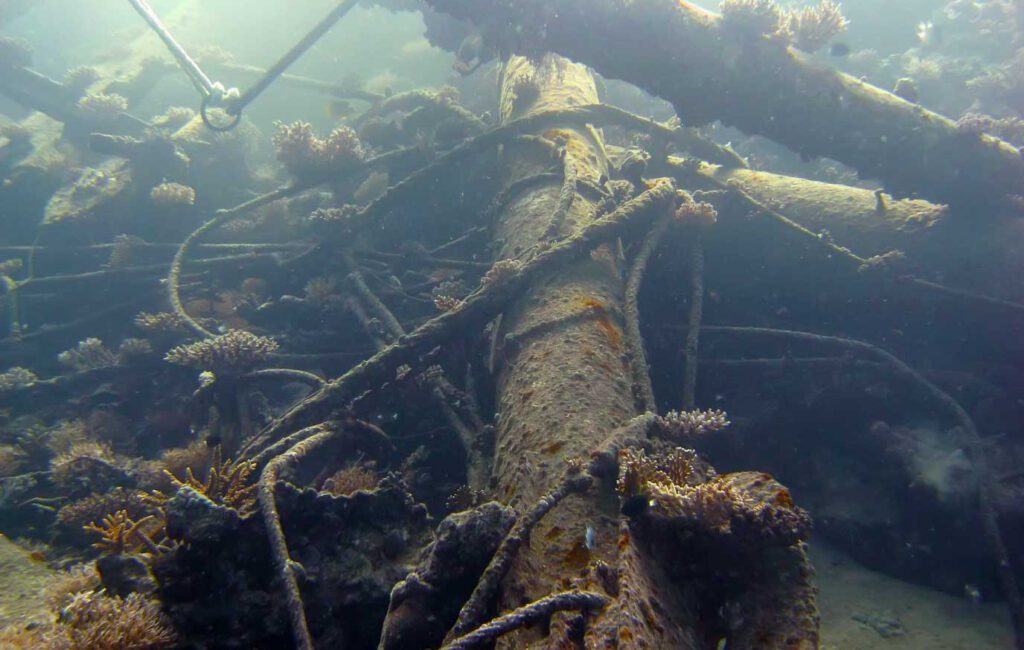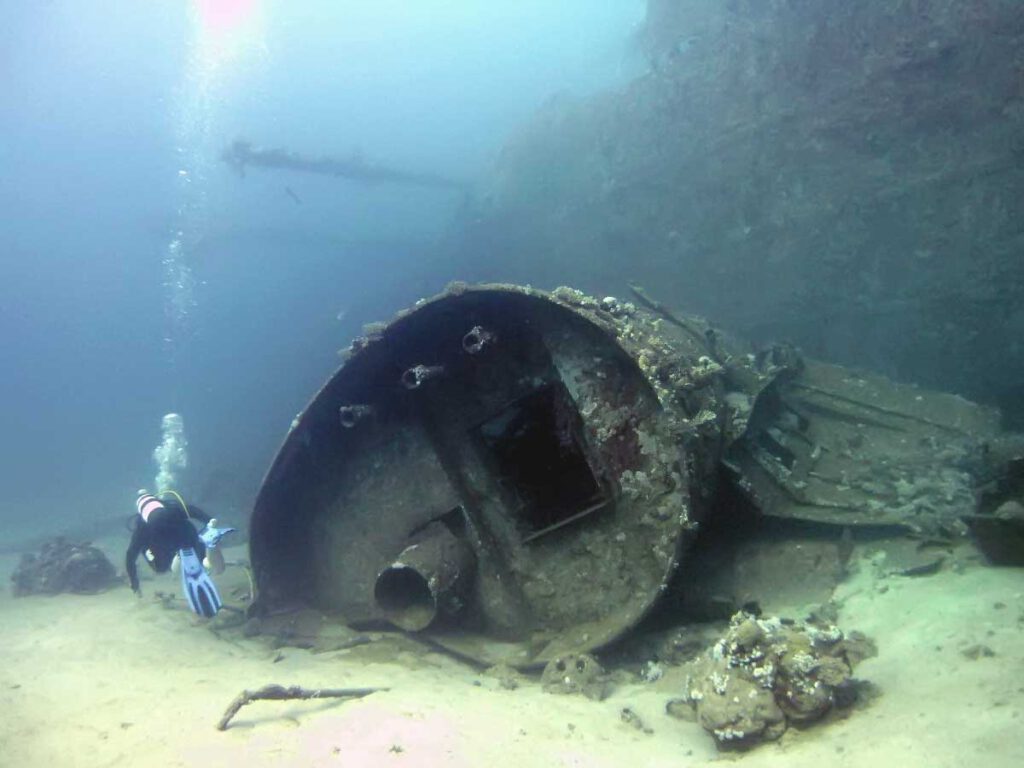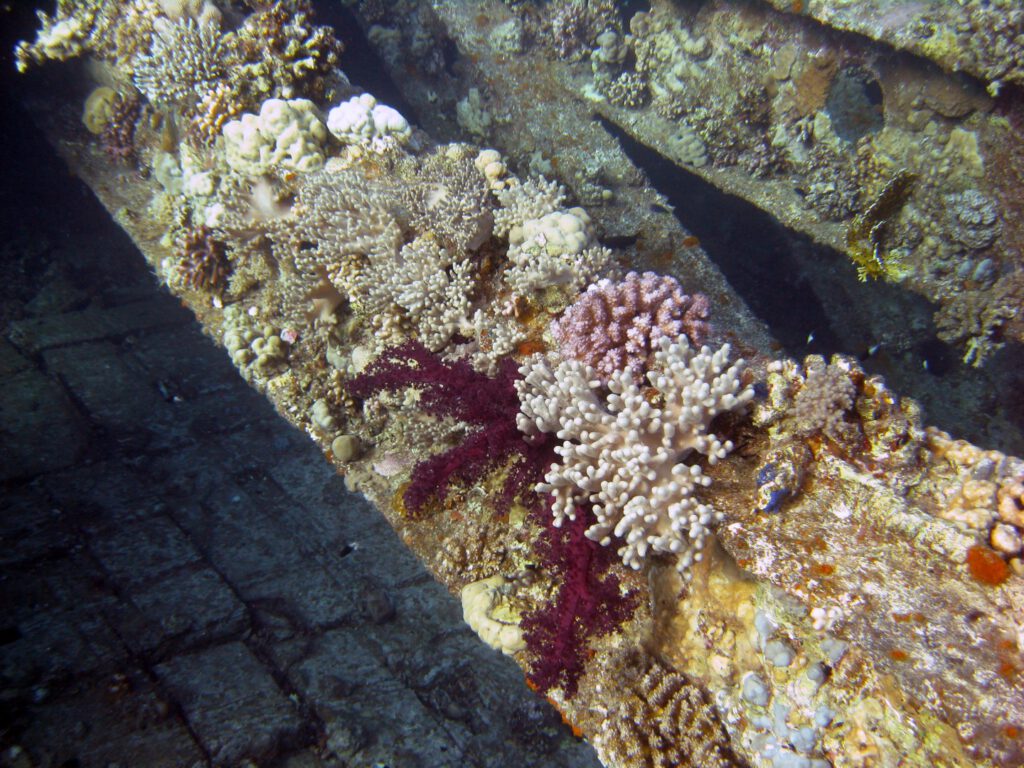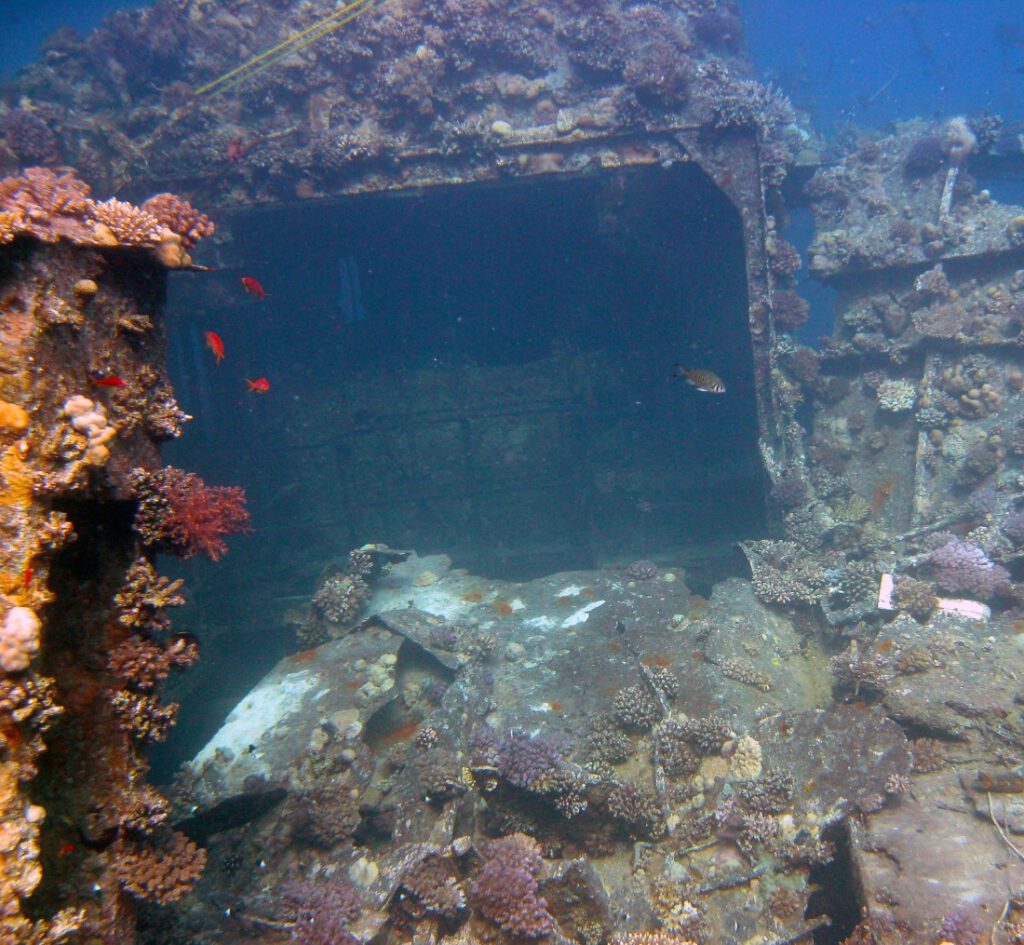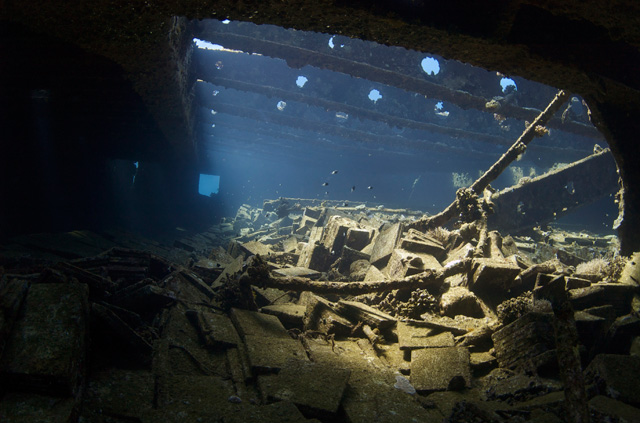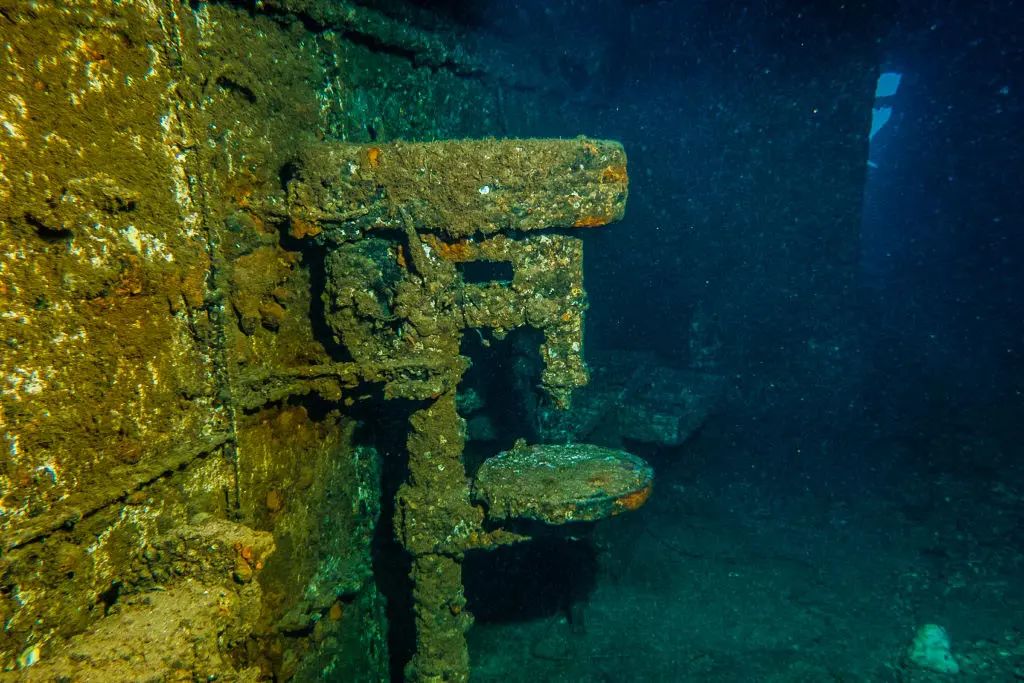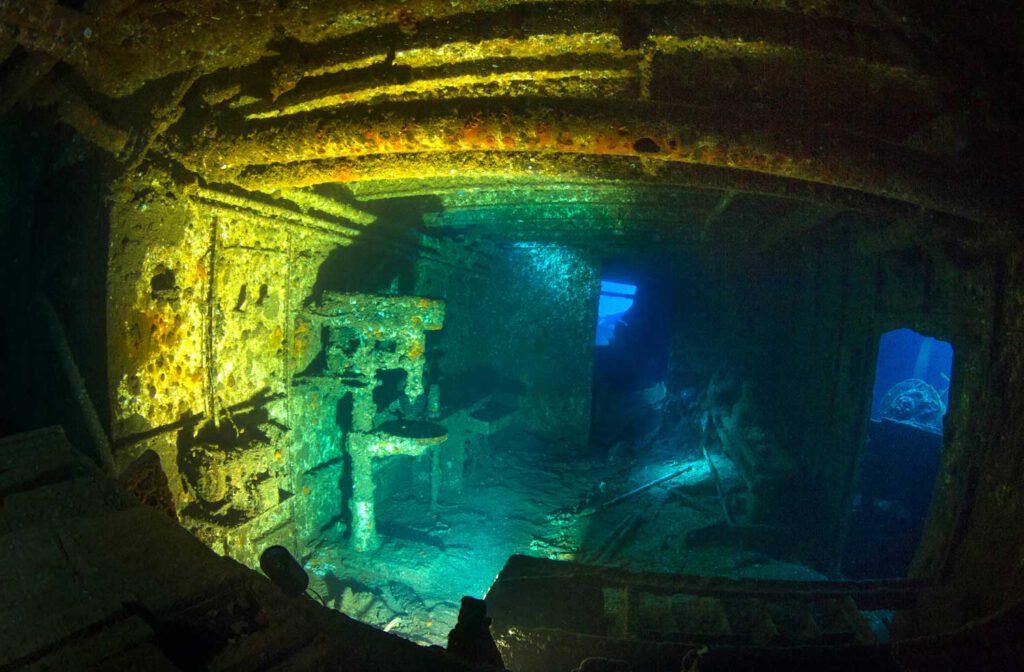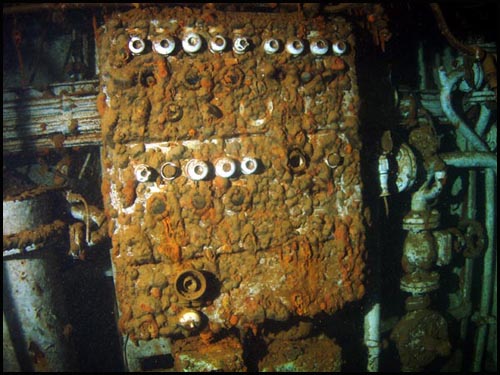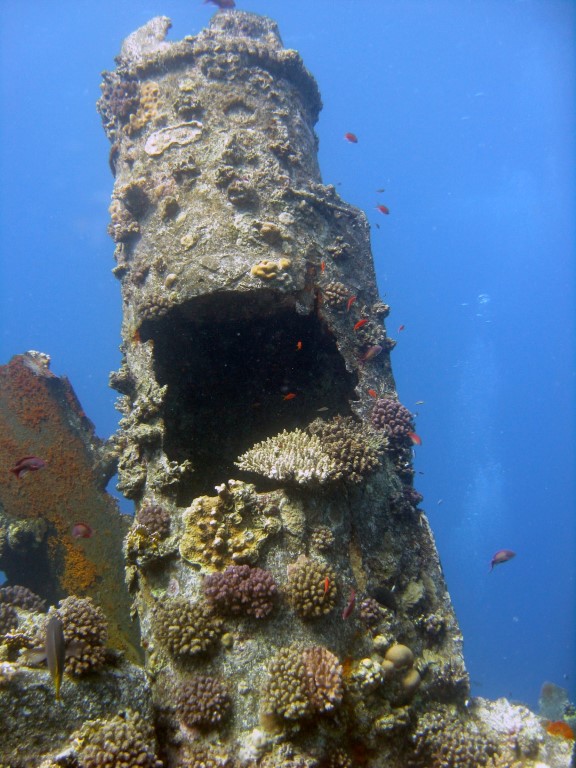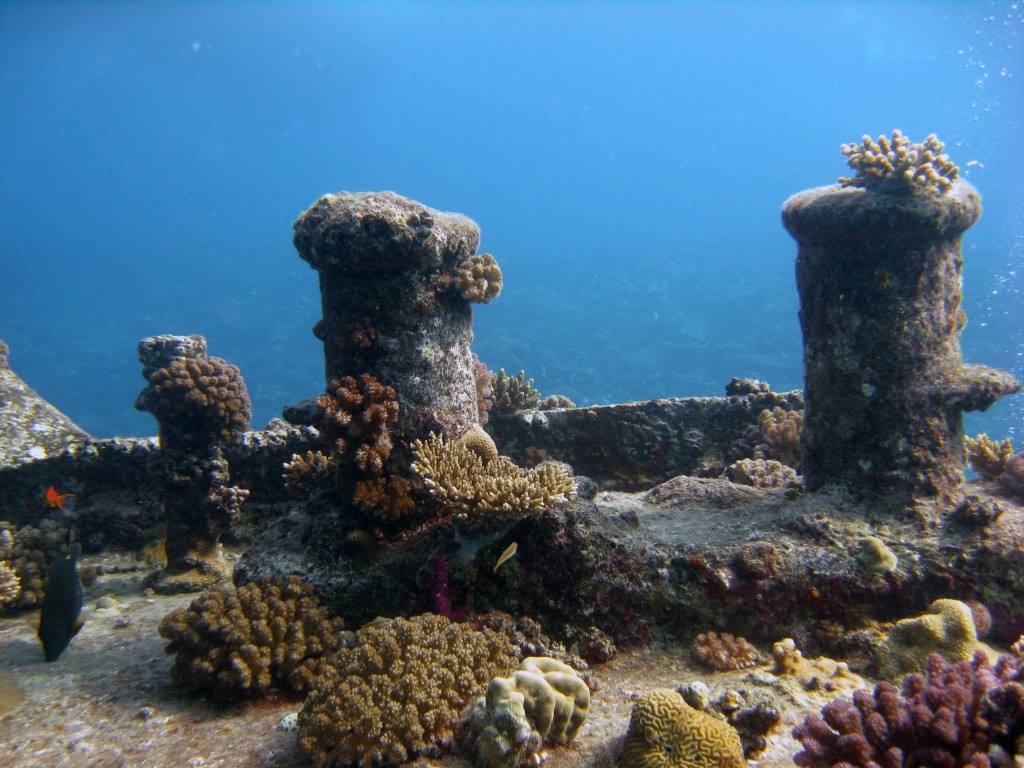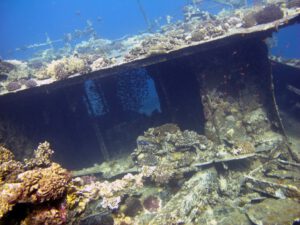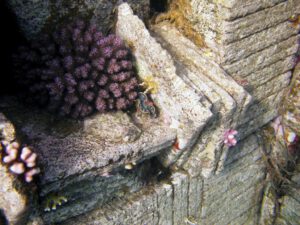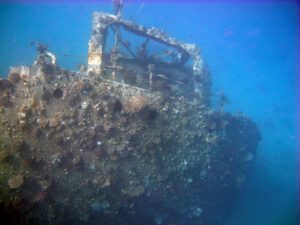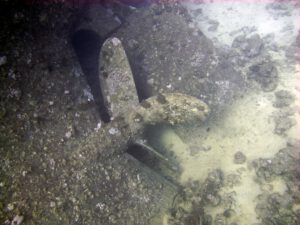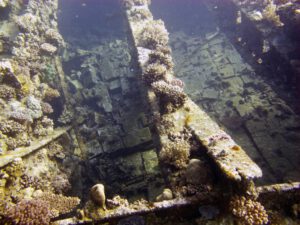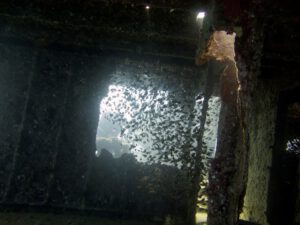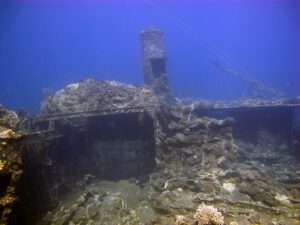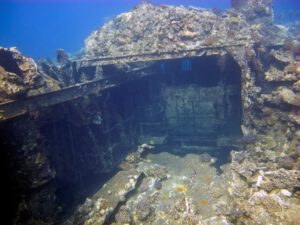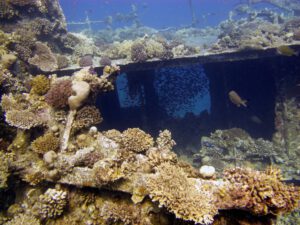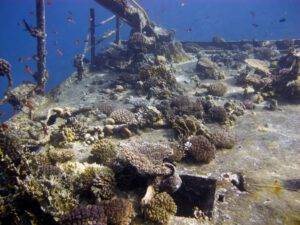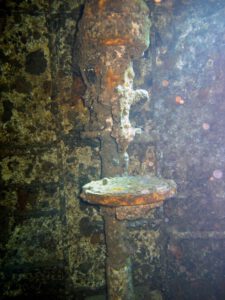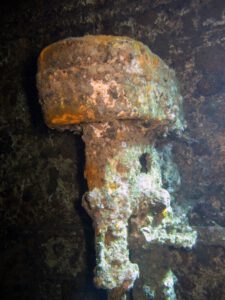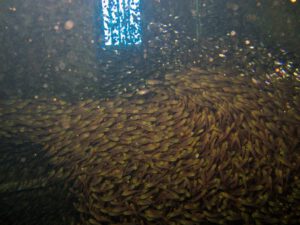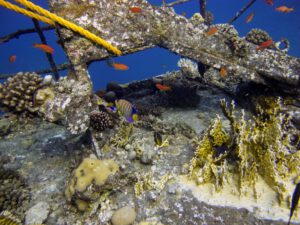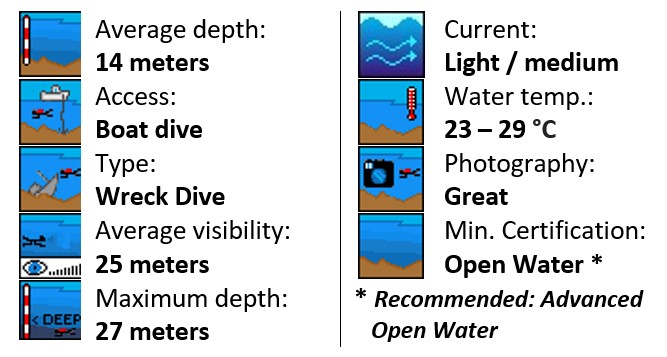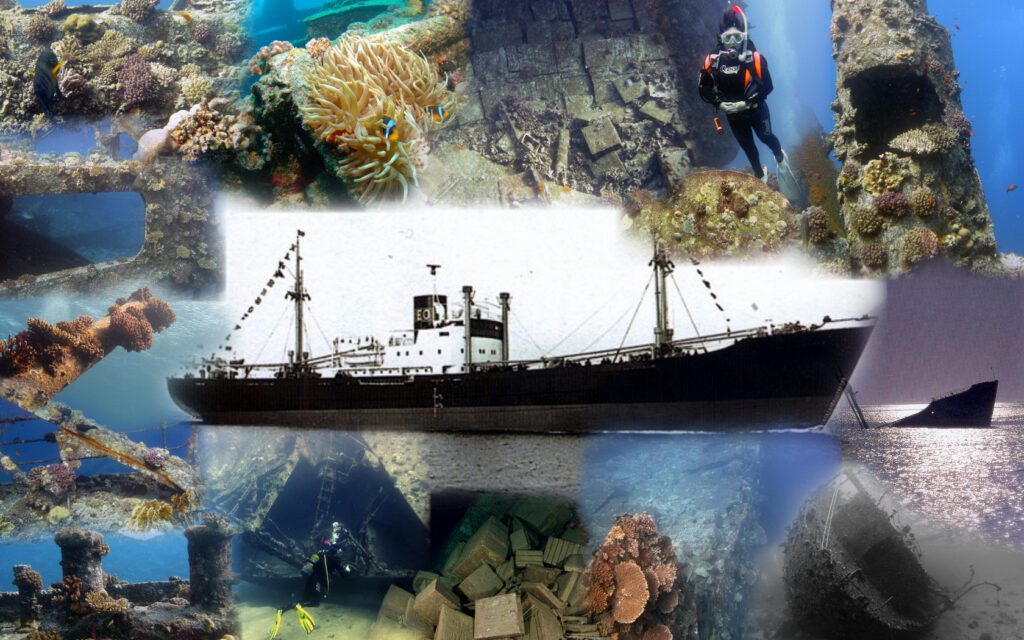The Chrisoula K (Abu Nuhas - Egypt)
The “Tile wreck”, the great mystery of the “Chrisoula K” and the “M.V. Marcus” …….
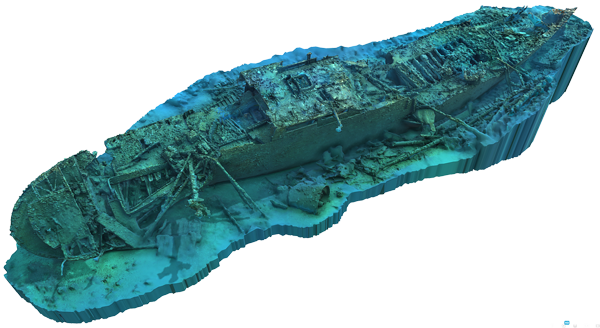
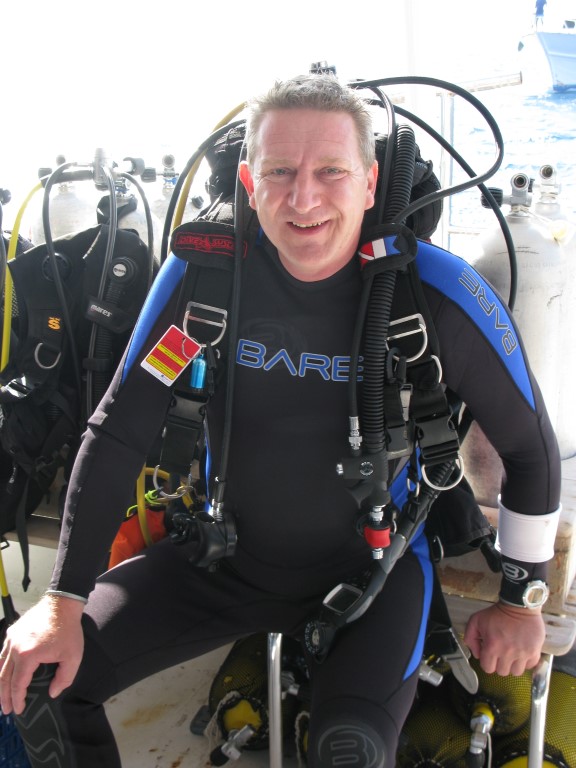
This article was is part of the “Get wrecked” series written by Edwin and originally published in the diving magazine of Lucky Divers Rotterdam (The Netherlands)
You can view the article by clicking on the image
NOTE: At this time the PDF of the published article is only available in Dutch.
Sorry for the inconvenience.
Click to view the original article as PDF (Dutch)
The Chrisoula K / Marcus (Abu Nuhas - Egypt)
The “Tile wreck”, the great mystery of the “Chrisoula K” and the “M.V. Marcus” …….
NOTE: We make use of “Sketchfab” click HERE to view the navigation controls
Click on the 3D model below to move it around
All credits to the above Photogrammetry model goes out to Holger Buss
The story & the dive
Ned Middleton (left) and Peter Colling (right)
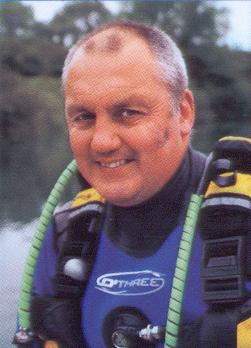
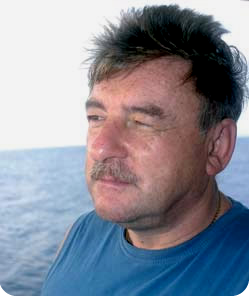
Again a story about 2 wrecks that perished on the infamous reef of Abu Nuhas in the Red Sea.
Since the 90s, 2 well-known wreck specialists/writers ‘Ned Middleton’ and ‘Peter Collings’ have been battling to uncover the true story behind the “Tile Wreck”. Ned Middleton claims that this wreck is the Chrisoula K., which sank on this reef in 1981.
This is not surprising because this name can still be read on a piece of the bow of the ship.
But according to Peter Collings, this is the M.V. Marcus. Both are convinced that they are right, but recently Peter Collings has been able to provide conclusive evidence that confirms his story.
The fact is that both ships sank on the reef of Abu Nuhas.
The great confusion has arisen because the bow and the ship are separated from each other.
The story
According to Ned Middleton, there is no doubt that this is the wreck of the Chrisoula K., given the fact that the ship’s bow still bears this name. According to Ned, there is also no reason that this wreck would be the Marcus since according to him there is no mention in the archives of the Lloyds register about the sinking of a ship called ‘Marcus’ at this location.
However, Peter Collings has recently provided irrefutable proof that this wreck is indeed the Marcus.
During his research for his book ‘Sunderland to Suez, the story of the Thistlegorm’, photographer Howard Rosenstein (who discovered the famous wreck of the ‘Dunraven’) gave him a photo that he had taken himself in 1979. This photo clearly showed a sinking Marcus on Abu Nuhas.
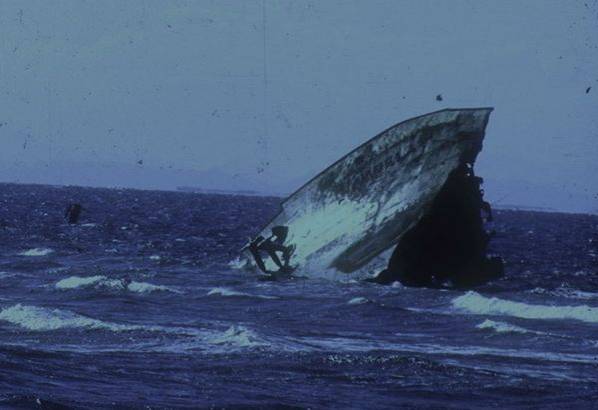
Howard Rosenstein’s photo of the Marcus from 1979
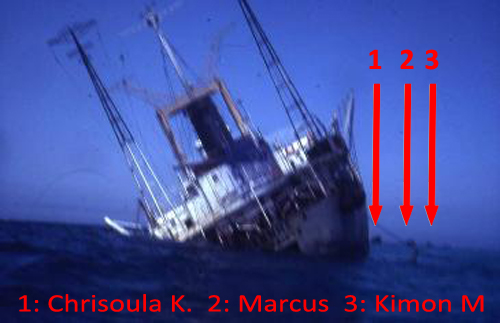
This means that the Marcus ran on the reef 2 years earlier than the Chrisoula K. During one of his first diving trips in 1979, a local fisherman (Saleem) told me that he had seen a new wreck on Abu Nuhas that had not yet completely sunk.
Saleem asked if Peter wanted to come with him to salvage some things from the ship. Peter then wrote the name of the ship in his logbook on ‘Marcus’.
This was clearly visible from the bow that was still above water. Saleem removed tiles and statues from the ship and then also took the ship’s bell with him.
Unfortunately, Peter did not pay attention to this at the time, as this would have saved him 26 years of research.
In 1983 Peter was an eyewitness to the sinking of the Giannis D.
He made many film images and these images show the bows of 3 ships…..
In 2006 he finally got in touch with Saleem again, he still had the ship’s bell in his possession. He had painted it white by now. Saleem allowed Peter to clean the bell and Peter then took pictures of it. The engraving on the bell was: “ATLAS BREMEN 1956” the name was eventually found in the Helenic Shipping register.
In this register the following information was found: “Built in Bremen in 1956 by Flensburger SchiffGe for the Atlas Levante Line as being M.V. ATLAS”
In 1959 the name changed to NAGUILAN, and in 1959 it became NORDHAFF. In 1971 she was on her way from New Orleans to Bordeaux with a cargo of soybeans when a fire broke out in the engine room, injuring 4 crew members and killing 1 crew member.
She managed to reach the port of Mobile where she was temporarily repaired, she was able to finish her journey but was then considered lost. She is then bought by one of Dimitris P. Kavada’s shadow companies and repaired again and then sails again.
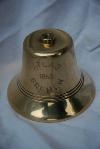
The original schipsbel
In the next 4 years, the name of the ship will be changed frequently and transferred several times to other companies with connections to Kavadas. In 1978, the “Vikki Shipping Line” became the owner and was given the name Marcus.
During a storm in May 1978, the Marcus was on its way from the Suez Canal to Jeddah. According to the official report, the ship had problems with the steering.
Below is a part of the statement to Pieter Collings by Stephan Jablonski (A Polish crew member of the Marcus AND the Chrisoula K.):
“My name is Stephan Jablonski and I understand that there is uncertainty within the diving world about some of the ships I sailed on from 1971 to 1981. I hope my story can solve the mysteries. I have been retired for 20 years but I can still remember these years well, especially considering the fact that I have been shipwrecked 4 times. Of which even 3 times in 1 year….”
1978:
“In 1978 I worked at the Vikki Shipping Line. This was a Greek merchant fleet that consisted of very old ships. It was during my third trip that I was shipwrecked for the first time, in May 1978 I was stationed on a newly purchased ship, a 4 hold freighter with 4 diesel engines, a real rust bucket, but the engines were in good condition. When I see Peter’s photos of the engine room now, they immediately bring back memories, this was the only ship I have ever worked on with such an engine room layout. This ship is the Marcus! We were loaded with floor tiles that were on pallets, I think these were for a palace of a Sheik in Saudi Arabia. In the early hours of I woke up to a huge noise of scraping metal and people running. We had walked on a reef….
Over the next 6 hours, we tried to prevent the ship from filling up with water. There was already 5 meters of water in the engine room and it was still rising. The back of the ship where the quarters were located was soon completely submerged. In the meantime, several ships had already stopped and sent their lifeboats to pick us up and we left the ship. I didn’t know exactly where we were but I saw a large island west of the sailing route. We were taken to Suez where I was told that the cause was a problem with the steering of the ship.”
3 years later:
“In August 1981, I worked on another freighter, the Chrisoula K., and relived the journey of my first shipwreck. After we were loaded with floor tiles we had to make an emergency stop, the bridge reported warning lights for the engines. Despite the fact that we could not find any problems, we had to overhaul the engines completely…. That was a tough 18 hour shift! The engines were started again and we continued our way through the Suez Canal. But we were much higher in the water…. And I realized that cargo had been unloaded. During my next shift I was working in the engine room when I suddenly heard that familiar sound of scraping metal again…. I quickly ran upstairs and thought I was dreaming…. there was that island again with the same reef in front of us… We were still floating, but the current pushed the bow further and further up the reef.
I didn’t get the feeling that we were going to sink but we were immediately ordered to go into the lifeboats.
As we sailed away, I saw the Marcus sticking out of the water near the bow of my old ship. Later I was told that we had run aground on Abu Nuhas.
At this point, I decided it was time to retire…..”
Since the bow of the Chrisoula K. was an obstacle with regard to navigation, the Navy later removed it from the reef.
Another striking thing is that the anchor chain of the Chrisoula K., as captured on photo when it was still on the reef, does not match that of the tile wreck. As you can see in the photo below, the anchor on the left side of the Chrisoula K. is still in place while the right anchor is down.
In the case of the tile wreck, this is the other way around……
Also, the crack in the bow, as seen in the Chrisoula K., cannot be found on the wreckage.
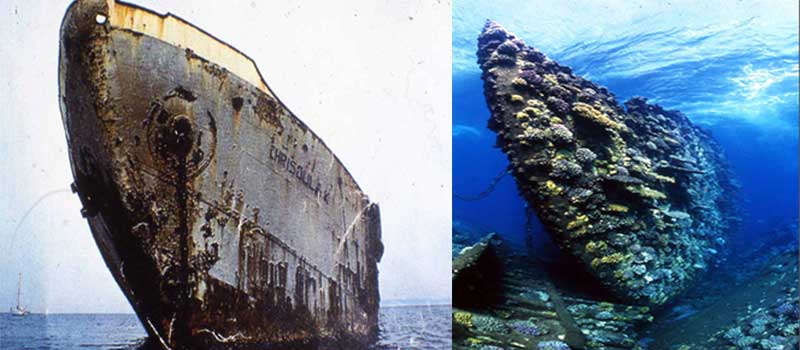
On the left the Chrisoula K. with the anchor on the right side down, on the right the tile wreck with the anchor on the left side down
A summary of the evidence:
- In 1978 the ship’s bell was salvaged (Only the Chrisoula K. sank in 1981)
- Photos taken of the bridge of the Gianis D. clearly show 3 bows on the reef.
- The bow of the Chrisoula K. was completely separated from its hull on the reef (Photos prove this), the ’tile wreck’ still has the bow partially attached to it.
- The booms of the Chrisoula K. lie on top of those of the Marcus.
- The engines of the tile wreckage differ from the engines that were installed in the Chrisoula K.
- Photos of the bow of the Chrisoula K. do not match those of the tile wreck, in particular the anchor chain and the crack in the bow do not match.
Enough evidence for Peter to continue his search for the real wreck of the Chrisoula K. Together with his regular friends Ali Baba and Mohamed Farouk, Peter Collings goes in search of the remains of the Chrisoula K.
Dr. Fiona Stewart provided them with ‘side-scan’ sonar equipment. By scanning the reef of Abu Nuhas with this ‘side-scan’ sonar, Fiona Stewart managed to find the remains of the Chrisoula K.
The complete hull was about 600 meters away from the reef in about 60 to 80 meters deep water.
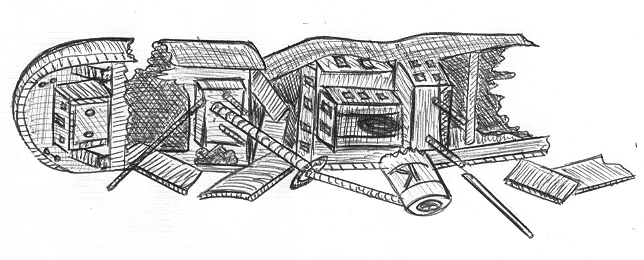
Drawing of the ‘real’ Chrisoula K. wreck as discovered.
The rear of the ship is at a depth of about 65 meters and lies in a northerly direction on the starboard side.
Her hull has collapsed, but the stern is still quite intact, complete with stairs, rudder and propeller.
The rear hold and subsequent section has collapsed, the bridge and accommodation area is still intact.
The front hold has been turned into a messy area of beams and plates, a huge debris field of about 70 meters is spread over the seabed.
There is evidence of the cargo with tiles, but not as you would expect if the ship had been fully loaded. This confirms the story of Stephan Jablonski who already indicated that part of the cargo had been transshipped during the voyage.
(The owner of this shipping company, Demitris P. Kavadas, would later be found guilty of insurance fraud in relation to a number of other ships including the Viki K and Elpinki K – both of which sank around the same time as the Chrisoula K.)
THE TILE WRECK HER TRUE STORY
by Peter Collings as published on deeplens.com
The data
- Year of construction: 1954
- Type : Cargo ship
- Tonnage : 3807 tons
- Power: 2700 hp.
- Length: 101.05 meters Width: 14.84 meters
- Power: 1 x 2,700 HP / 2-Stroke MAN Diesel Engine – Type G 9 Z 52/90
- Speed: 13.5 knots
- Launched: 16.12.1953
- Shipyard: Orenstein & Koppel / Lübecker Maschinenbau Gesellschaft – Construction number: 467
- First shipping company: E.L. Oldendorff. Lübeck-Travemünde
- Last shipping company: Clarion Marine Co. SA., Piraeus, Greece
- Date of Sinking: August 30, 1981
- Depth: between 60 and 80 meters
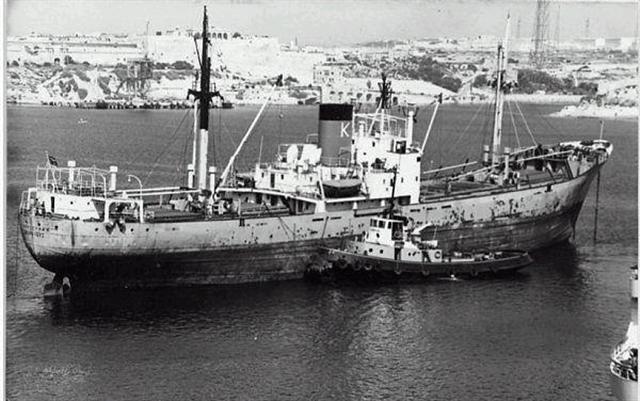
The Chrisoula K. for anker
The Chrisoula K, built in Germany in 1954 in the German Baltic port of Lübeck near Orenstein, Koppel and Luebekker.
Her first name was “Dora Oldendorff” The ship had a 9 cylinder diezel engine with a power of 2700 HP.
This was built by Masch, Augsburg-Nuernberg (MAN) In 1970 a new owner baptized her “Anna B” Then in 1979 it came into the hands of the Greek Clarion Marine Company of Piraeus which baptized her “Chrisoula K”.
Conclusion
So we have decided, the ‘Tile Wreck’ is the M.V. Marcus.
The Giannis D. is the most dived and for many also the most beautiful wreck of Abu Nuhas. (But tastes differ…)
Well worth a visit is the still intact prow and engine room. (which is full of glassfish.)
The mast, wires and cables are encased in soft coral.
The dive
The M.V. Marcus is located in an open, sandy place at a maximum depth of 27 meters.
The bow was just above the surface of the water in the beginning but the waves have reduced it and it now starts a few meters below the surface of the water. The central part of the wreck is nicely uphill with the cargo still in place.
The bridge bends forward to port and is slowly separating. The stern can be visited but is a bit unstable, if there are high waves you can hear many grinding noises and you can see the movement in this part of the ship.
More than 45 years on the seabed ensures that as a diver you can not only admire a beautiful wreck but also enjoy a wreck that is covered with numerous hard and soft corals with the accompanying colorful fish
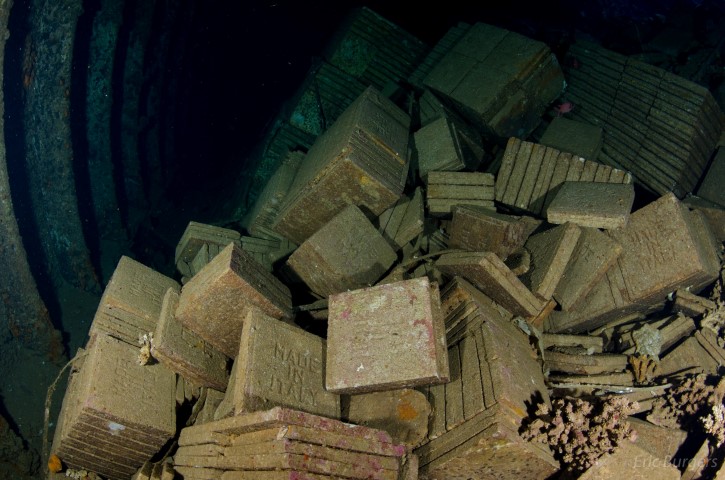
The load: Italian tiles
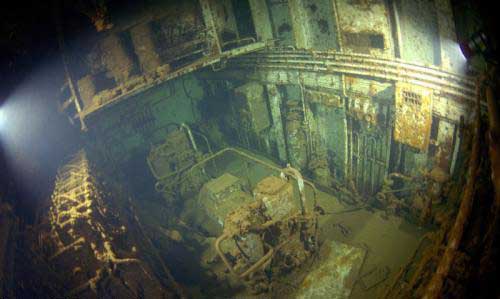
The engine room
The engine room is penetrable for the advanced wreck diver but watch out for the toll-free obstacles.
Other parts of the ship offer nice passages to swim through. Penetration in various places (without too much danger of getting stuck to something) is also possible, especially the bridge is very easy to penetrate.
But you still have to be careful about the stability of the wreck. Due to the unstable location and the narrow entrances and exits, it is advisable not to go into the wreck in rough weather!
Through the engine room, which is also fully equipped as a workshop including lathe, etc., you can swim through a passage into the large hold of the middle section. Not much is left of the nave and is also the least attractive to look at.
Here and there there are still large metal partitions on the seabed. Continue your way through and over the cargo hold towards the bow. The bow is much further towards the reef.
It is definitely worth taking a look here.
The dive plan
I have dived the Marcus several times myself, strangely enough this wreck is often put away as a second choice by most dive centers. The Giannis D. and the Carnatic are generally elected earlier.
This was also the case during one of my visits to Abu Nuhas, the plan was to make a dive on the Carnatic after the Giannis D., but because there was too much wind, the dropping over the Carnatic was almost impossible. Because of this we moved to the Marcus. (Nice that my logbook says Chrisoula K….) this because our boat would have less problems with ‘anchoring’ here, later it would turn out that nothing could be further from the truth…..
And so I first came into contact with this ship, and what a meeting……. After our jump we arrived at the middle part of the ship, our first goal was the propeller as this is the deepest point of the wreck. Towards the propeller you swim along the bottom of the ship because this part of the wreck is on its side.
The large brass screw is fairly overgrown, with the exception of a small piece…. This is the part where all divers hold on for ‘the’ photo…. On this piece the propeller shines as if it has just come out of the factory….
Here you will also find a large crack in the bottom of the ship through which the cargo (the tiles) comes out.
We continue our way around the back of the ship and swim towards cargo hold no. 3, which is completely open and here too you can take a good look at the cargo of the ship.
The so-called ‘loading booms’ are also located on the sandy bottom.
We continue our way in the direction of the bow which is also the direction of the reef. The first thing you will come across is the gigantic chimney that lies on the seabed next to the ship.
The depth here is about 19 meters. At this point, our dive took a completely different turn when we were suddenly confronted with a swinging anchor of a submarine……
The anchor swayed around and managed to get stuck behind the wreck every now and then and then shoot loose again. In short, a life-threatening situation. After the anchor had been shot close to our heads a few times,
We thought it was enough and armed with our diving knife we decided to cut the anchor rope loose before serious accidents would happen. But just before we wanted to put our knives in the rope, the anchor had apparently found a solid place and remained attached to the wreck. We decided to leave the anchor for what it was as it was no longer a danger. Well, after this adventure we continue our way over the wreck again……
Where were we…… Oh yes, the chimney…
If you were to swim further here in the direction of the bow, it would become shallow very quickly and before you know it you will be at a depth of 5 meters, this is not wise if you then want to go back to see the rest of the ship.
In order not to take off too far immediately, it is better to view cargo hold no. 2 just after the aforementioned chimney. For this you have to take off slightly (up to about 12 meters) towards the top of the ship. In cargo hold no. 2 you can easily descend to view the cargo. For the advanced (wreck) divers this is also the entrance to the engine room.
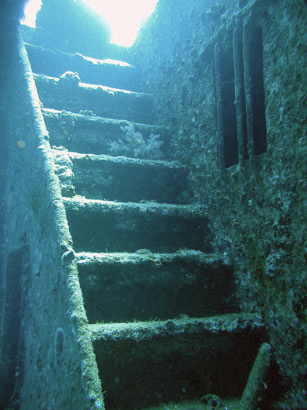
The stairs
If you want to view the engine room, take into account the narrow passage to the engine room. The upper part of the engine room (workshop) is fairly easy to enter, The engine room itself is very spacious but is located in the lower part of the wreck.
Here is also the engine and also a 2nd workshop. This space can only be reached via the stairs located in the corner of the upper workshop.
Please note; this part is very difficult to access and certainly not suitable for inexperienced wreck divers!
In the aforementioned upper part (workshop) you will also find all kinds of tools such as a drill press. At the very back of the engine room is the group box for electricity.
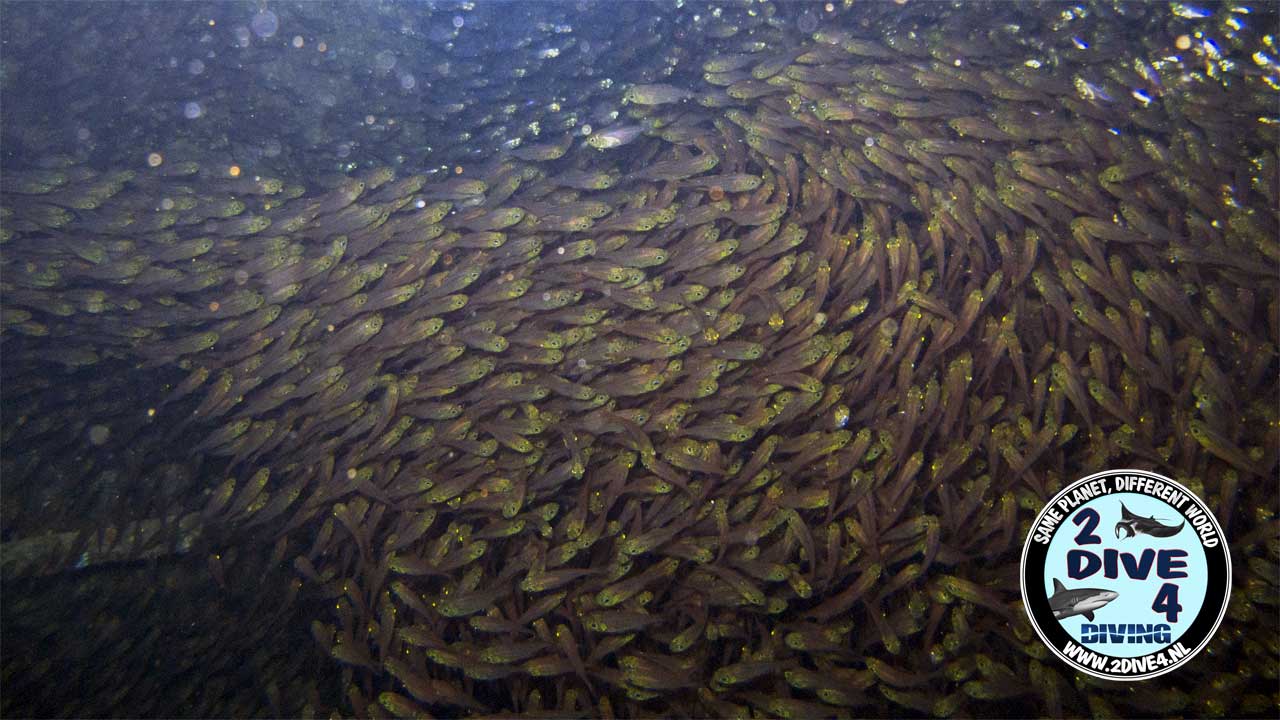
A huge amount of glassfish in the wheelhouse
You can only leave the lower part of the engine room via the same stairs.
Well, for those who don’t go into the wreck we continue our way from cargo hold no. 2, ascend a little bit and then you will find the bridge at about 10 meters depth. It stands upright and is also very easy to penetrate.
If you descend a little further in this section, you will automatically return to the cargo hold with (yes…) the tiles. You can also easily swim through the partially open wheelhouse.
Take plenty of time to look around and on the wheelhouse. You will find many types of coral and countless species of fish here.
The incredible amount of glassfish is truly indescribable!!
Continue your way towards the bow, above and around the first cargo hold is an ideal place to have your safety stop as you are now around 5 meters deep. Here too you will find the remains of the ‘loading booms’ of the front hold.
If you swim a little further, you will find the remains of the bow which lie against the reef. Be careful here, the waves can throw you against the reef without mercy. To end the dive, you will probably have to swim slightly off the reef as the dive boat cannot anchor too close to the reef.
During our dive it turned out that a strong wind had suddenly come up. This is not uncommon in this part of the Red Sea. The waves reached about 1 1/2 till 2 meters in height, and it took us a lot of effort to literally be swept on board…..
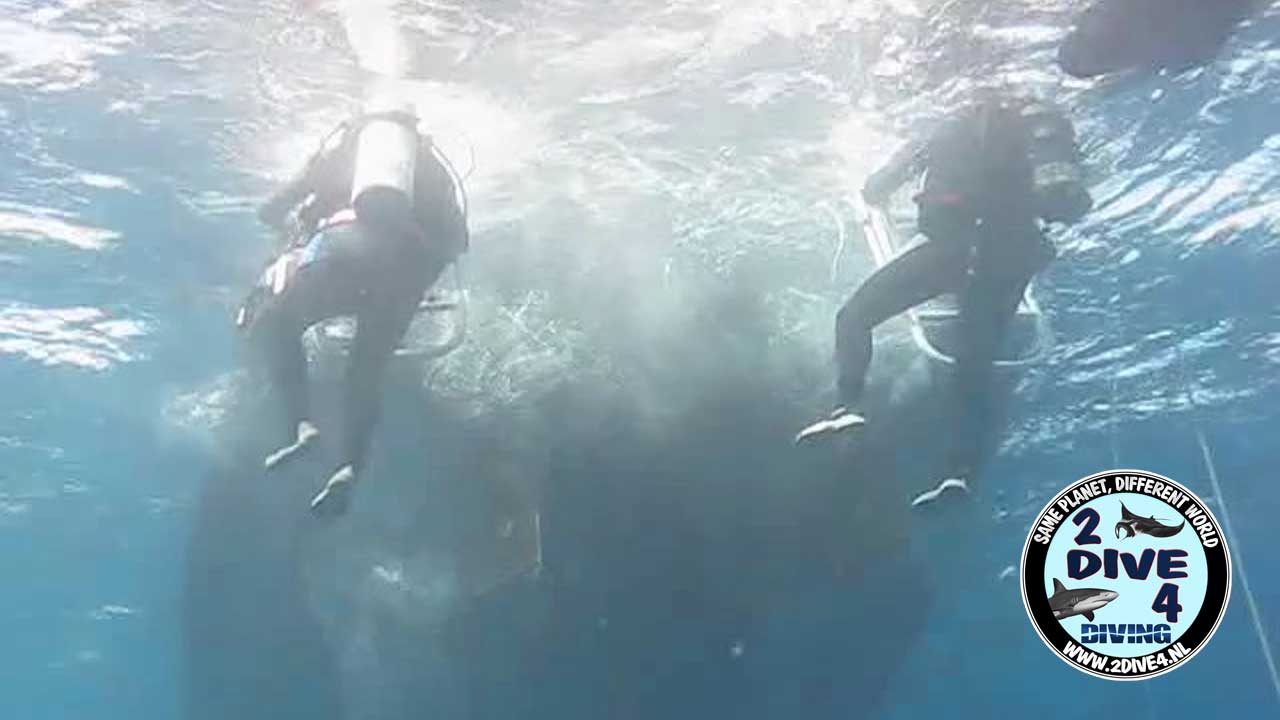
Big waves at the end of the dive…..
On board we were told a surprising story…… Our boat had shot off the anchor during the dive…..
But luckily they managed to hook the anchor to the wreck just before the boat would run on the reef……..
Ehhhhhh that sounds familiar……
In other words, if we had succeeded in cutting the rope, we would have;
A: Had an extra wreck on Abu Nuhas and
B: had to swim a long way back to Hurghada…. .
Well, you have to force luck shall we say…. !
Flora and fauna
The ship is beautifully overgrown and is home to many species of fish. In the cargo holds you can encounter many moray eels, around the propeller of the ship whitetip sharks are regularly seen!
In the sand next to the chimney is a field with ‘garden eels’. On and around the wheelhouse you will find many hard and soft corals.
There is no shortage of fish species here either, from angelfish to bat fish, from anemone fish to crocodile fish, this wreck is truly a habitat for many different fish species.
Conclusion
The Marcus is often (wrongly) skipped by many dive centers or seen as being 2nd choice.
Personally, I think this wreck is much more beautiful than the Giannis D. The wreck is also worthwhile for open water diverse, given the depth of the wreck this is no problem at all. With the exception of the back of the ship, but here you can make a beautiful tour over and along the ship as an open water diver. If you don’t stay too long around the stern, given the average depth, you have plenty of time to view this wreck in peace.
This ship is also extremely suitable for wreck penetration! But the engine room is ONLY for experienced wreck divers !!
The wreck is large, but try to miss as little of it as possible! And what may also be important to some people is to know that no lives were lost during the demise of both the Marcus and the Chrisoula K.
